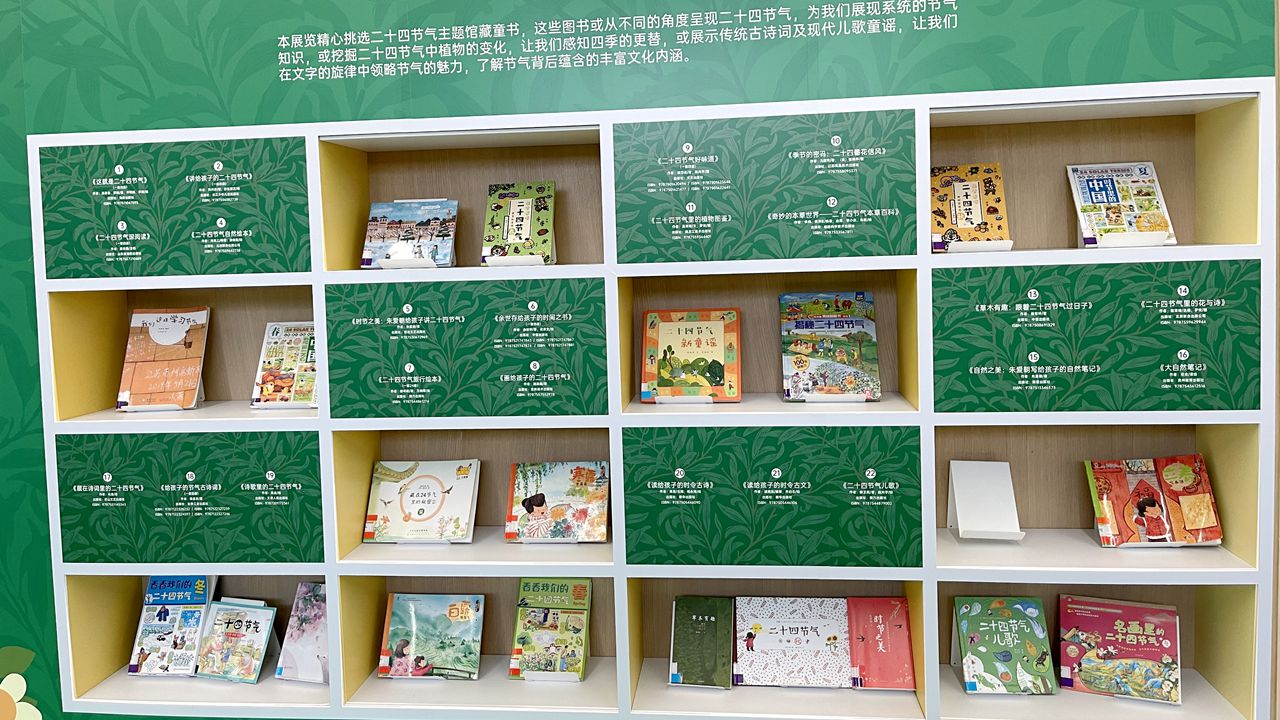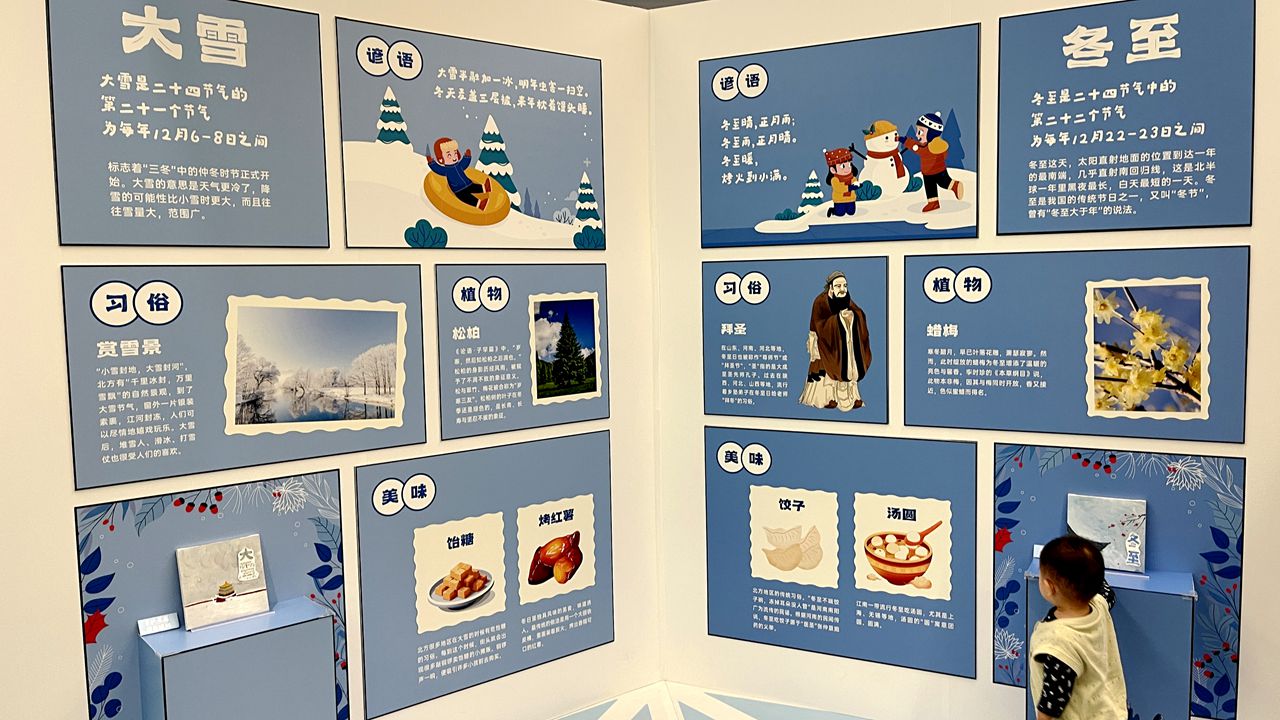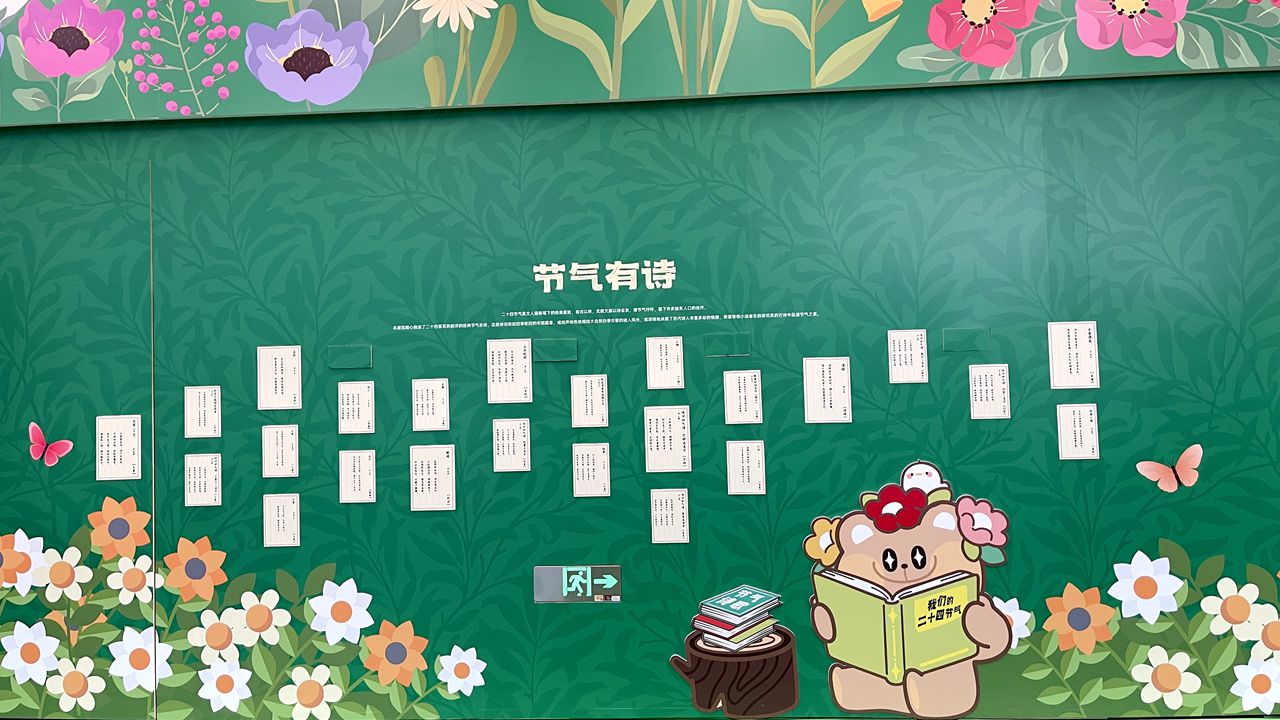Solar terms-themed book exhibition unveils cultural allure
Writer: Liu Minxia | Editor: Zhang Zhiqing | From: Original | Updated: 2024-12-18
During this winter, those who step into the children's services area at Shenzhen Library North will be transported through four seasons all at once. The ongoing exhibition centered around China's 24 solar terms invites readers on a journey spanning spring's blossoming flowers and butterflies to winter's chubby snowmen, enriching their reading experiences.

A view of the China's 24 solar terms-themed book exhibition at Shenzhen Library North. Photos by Liu Minxia
The 24 solar terms, a revered facet of Chinese culture, refer to the ancient system that divides the traditional Chinese year into 24 segments, each marking a subtle change in weather and natural phenomena.
These solar terms, offering insights into the cyclical rhythms of nature, are deeply intertwined with agricultural practices, guiding farmers in their seasonal activities such as when to sow or harvest. Each solar term reflects a specific weather pattern and seasonal change, reflecting a deep connection between humans and the natural world. With rich cultural significance and practical applications, China's 24 solar terms remain an essential part of China's traditional calendar system and agricultural heritage.

Solar terms-themed handcrafted works are on display at the exhibition.
At the book exhibition, visitors are treated to an extensive collection of books on solar terms, complemented by display boards and interactive engagements, allowing them to immerse themselves in the essence of each season and the charm of these enduring terms.
Before embarking on this solar term journey, readers can acquaint themselves with the essentials of these terms at the "solar terms wheel" within the Solar Term Knowledge Corridor of the exhibition.

The exhibition's winter-themed photo spot.
Inspired by the grandeur of the legendary painting "Along the River During the Qingming Festival," the exhibition's Four Seasons Phenology Corridor vividly portrays the seasonal transformations of spring, summer, autumn, and winter, allowing visitors to sense the passage of time.
This corridor draws inspiration from Yuan Dynasty (1279-1368) scholar Wu Cheng's "Collection of Seventy-Two Sub-Solar Terms in the Monthly Commands," which divides each of the 24 solar terms into three sub-terms based on observations of changing natural features. Wu found the activities of plants, flowers, trees, birds, and animals are closely intertwined with seasonal phenomena, climate variations, and the changes in nature. He recognized these activities as symbols of the changing seasons, such as plant sprouting, leaf growth, flowering, fruiting, leaf yellowing, leaf falling, animal hibernation, revival, awakening, breeding, migration, and more — termed as phenology. Content of this corridor can enrich the visitor's understanding of plant and animal behaviors in correlation with climate variations, epitomizing the intricate dance of nature's rhythms.

Poetry inspired by China's 24 solar terms and flowers associated with each term are featured during the exhibition.
In addition to an extensive library of over 1,000 books delving into solar terms, the exhibition features poetry inspired by these terms and insights into the flowers associated with each term. A standout highlight includes an interactive 3D book specifically tailored to winter, showcasing plant life, proverbs, and customs entrenched in the season's unique solar terms.
Moreover, the exhibition showcases solar terms-themed handcrafted works, such as collages collaboratively crafted by young readers alongside the library's team.
Upon concluding their tour, readers can capture snowy memories at the exhibition's winter-themed photo spot. The exhibition's thematic installations will dynamically shift in accordance with seasonal changes, promising visitors new surprises in the forthcoming season of spring.
Time: 9 a.m.-9 p.m. (Closed on Mondays)
Venue: the children's service area, Shenzhen Library North
Metro: Exit A, Hongshan Station (红山站), Lines 4 or 6